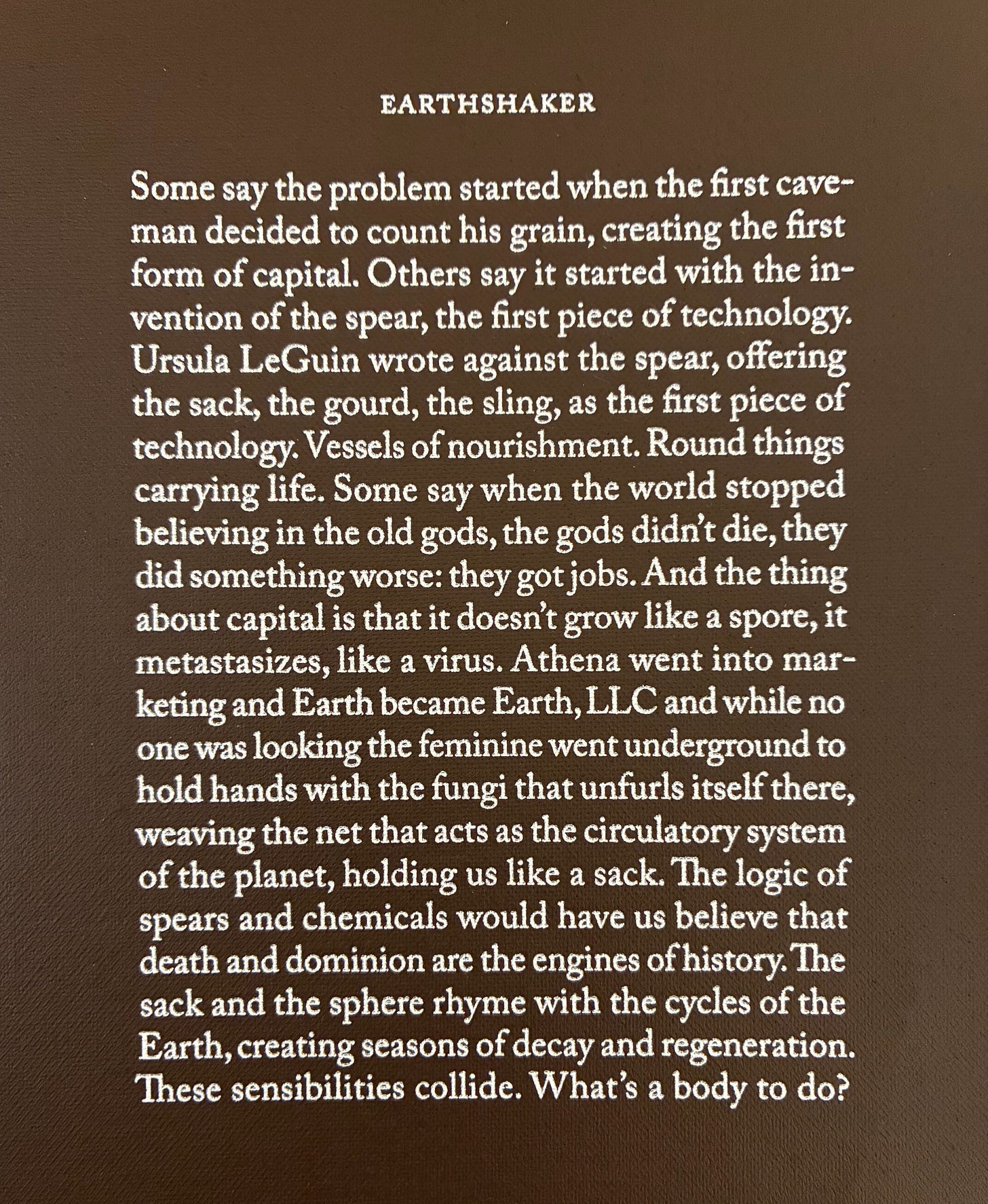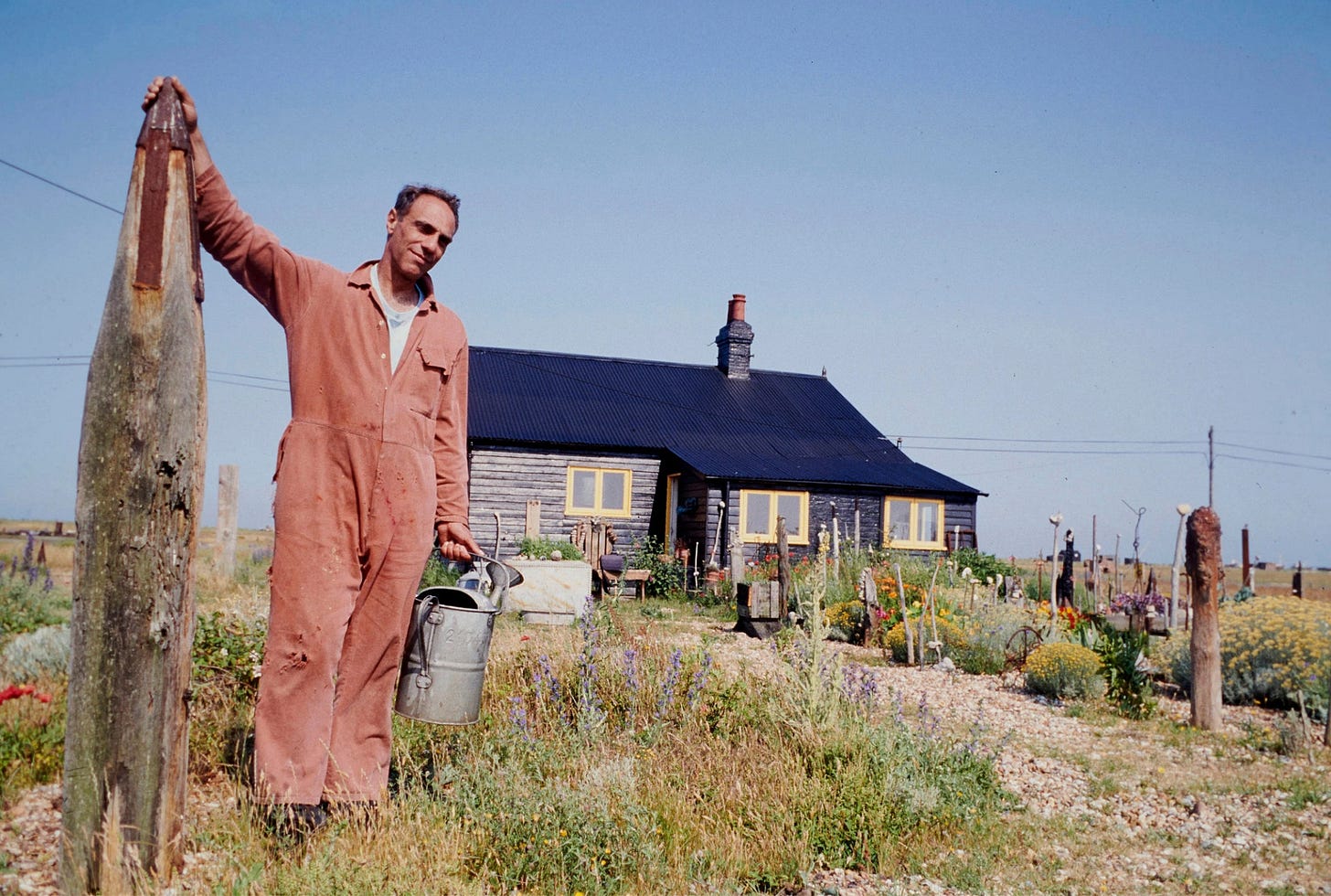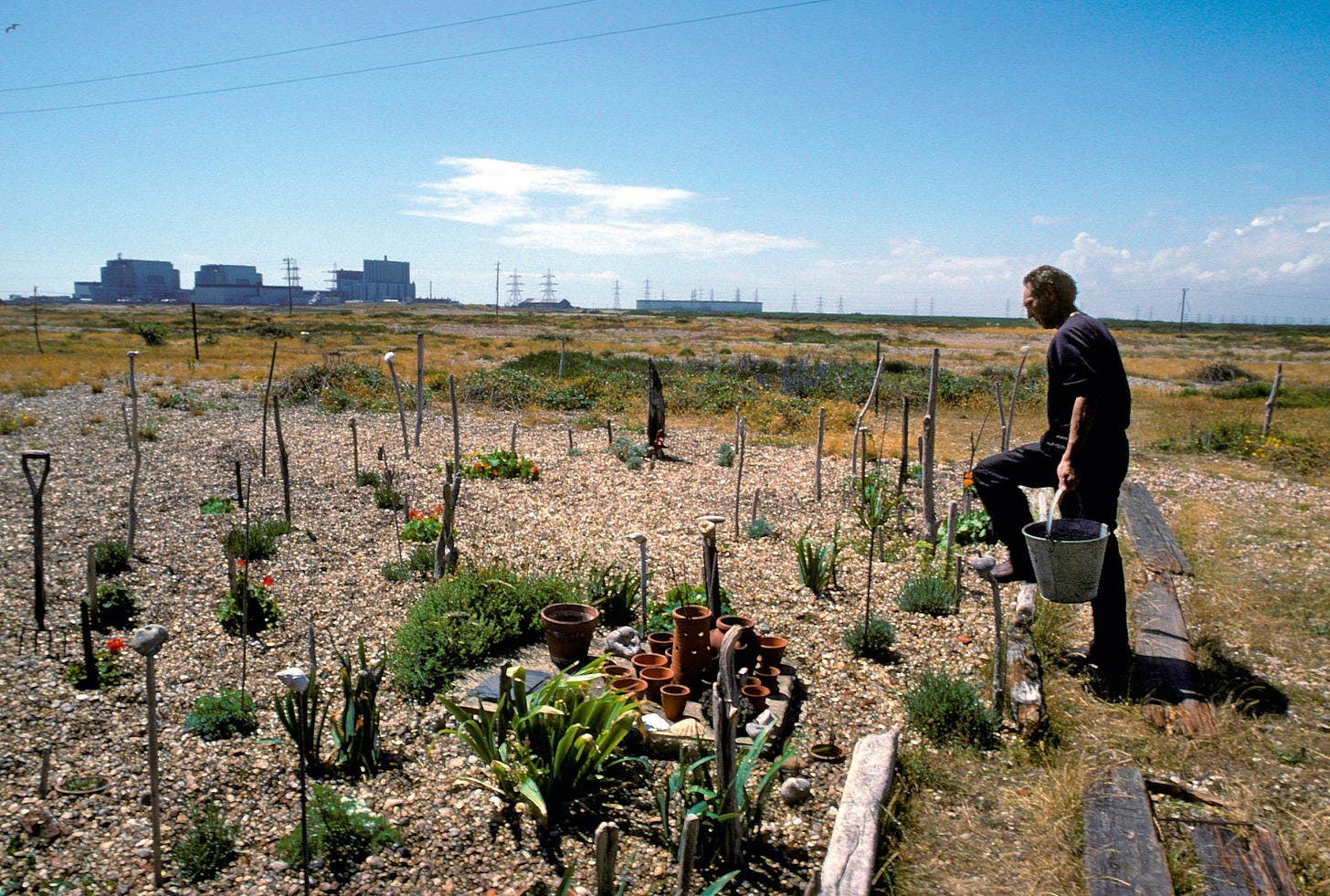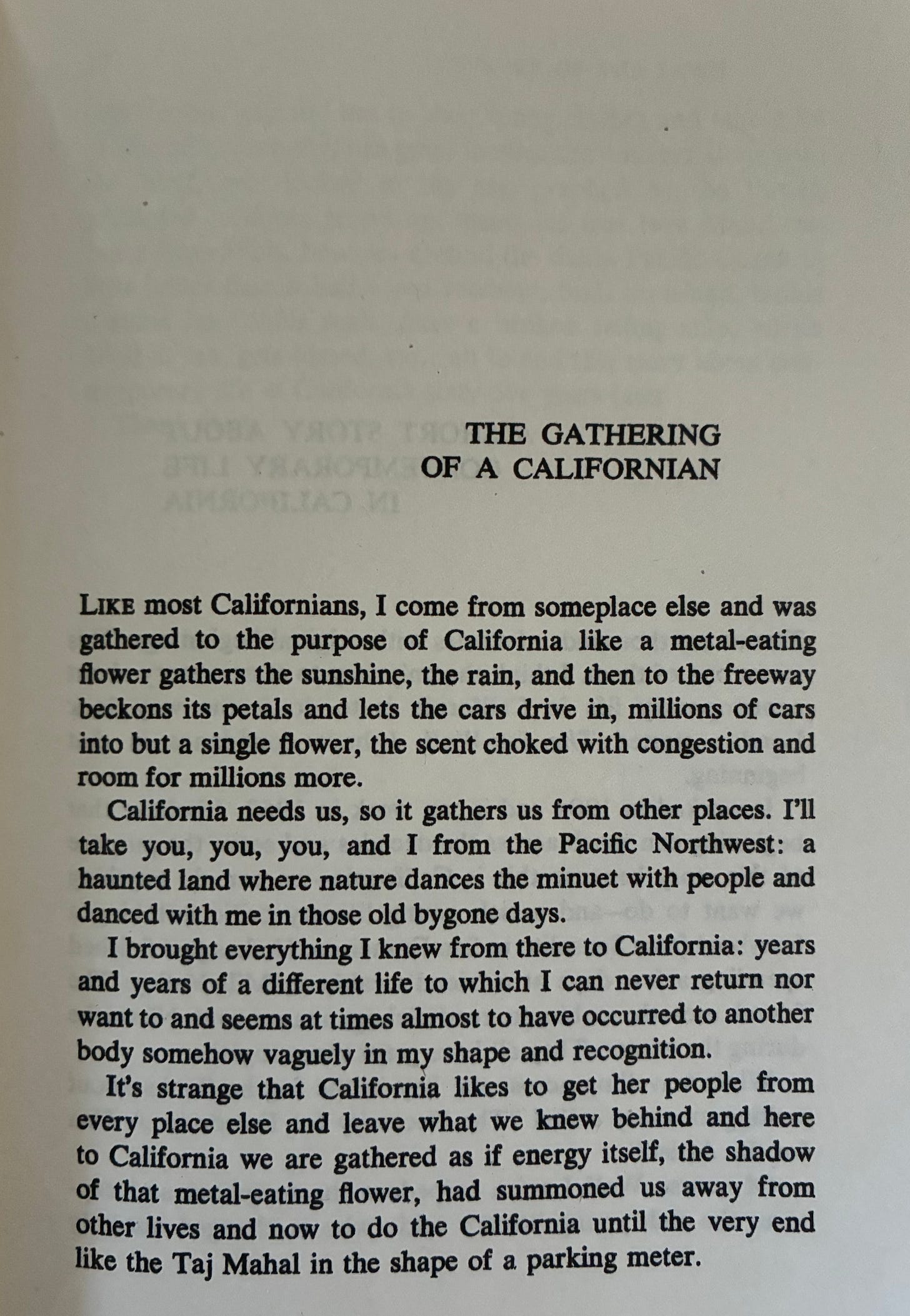I feel closest to death in the spring, awed by life’s fecundity. Shocks of green in the garden, the world flush and teeming with color. Every act has its corresponding reverberation, every sound its own echo. Spring reminds me that there can be no expansion without decay, all life touched by loss.
How easy it is to let death take over. To forget that life occurs through action and energy in motion. No proof of the calendulas or the zinnias yet, just a dream in my head and a handful of seeds in my palm.
To an untrained eye the ground might look dead and forlorn. Hopeless. But I know better. Know I can’t trust my sight to see. So I sow, eager to pluck the fruit of my efforts, knowing all the while that I might fail.
Last month I read Love’s Work, a memoir by philosopher and academic Gillian Rose. I was drawn by the epigraph, which reads “Keep your mind in hell, and despair not,” attributed to Silouan the Athonite, a poet and monk. I have struggled lately with despair, unmoored by genocide and war, the unlawful arrest of Mahmoud Khalil, the horrors I see every day as I scan the news, the casual cruelty I witness and encounter. It all feels so urgent. I’m trying to keep up because history is being erased and our ability to speak and gather freely is under threat. But how easy it is to numb the mind and deaden the heart.
Rose wrote Love’s Work as she was dying of cancer. She’s unsentimental about her life and illness, writing, “I must continue to write for the same reason I am always compelled to write, in sickness and in health, for, otherwise, I die deadly, but this way, by the work, I may die forward into the intensified agony of living.” For Rose “the intensified agony of living” means remaining in hell, which requires confronting our deepest suffering. In this space we come face to face with our soul:
A crisis of illness, bereavement, separation, natural disaster, could be the opportunity to make contact with deeper levels of the errors of the soul, to loose and to bind, to bind and to loose. A soul which is not bound is as mad as one with cemented boundaries. To grow in love-ability is to accept the boundaries of oneself and others, which remaining vulnerable, woundable, around the bounds. Acknowledgement of conditionality is the only unconditionality of human love.
It can feel dangerous to rest inside a space where we are “vulnerable, woundable, around the bounds.” It is where we confront death and our grief over our inherent fallibility. It is the most difficult work of all. But a refusal to do this work—to accept hell—only sinks us deeper into it.
The world we know seems to be ending. You could speak of this cosmically, or spiritually, or geopolitically, but regardless, the world is breaking open and falling apart. Old systems dying, new technologies emerging. Information and communication so dizzying we can hardly keep up. So we look away and check out, completely anesthetized.
It’s always the ones who have the least to lose who give up first. Some of us have already been fighting, have had skin in the game forever. In this country there is a kind of absolving of guilt, a refusal to let go of the mythology of supremacy. A cruelty you encounter so often you become numb to it, in both others and yourself.
What kind of future does this cynicism breed? How do we counter it? Lately I’ve been drawn to the image of The Fool in the tarot, the daydreamer who looks ahead with little regard to the dangers below his feet. For me The Fool represents the realm of innocence, possibility, and play. There’s a carefree connotation to these words, but enacting them involves real rigor.
In Wave of Blood, poet Ariana Reines’s fantastic new book, Reines speaks to the power of adapting a “fool’s ontology”:
As artists we all have this great privilege—even a responsibility—to untie ourselves from the noose of everything we come from and to go into the world making meaning anew. I am speaking about a realm beyond good and bad, right and wrong, a foolish realm of play. […] I am trying to correlate a fool’s errand, a foolish life, a fool’s ontology to the law of real authority, a kind of leadership and prestige and power that you can actually respect and that you can wholeheartedly honor because it is legitimate, legitimate and worthy power that is sane, that is not insane, that would put fair and also gentle and understanding limits on the infinite, not to be lame and frumpy and bourgeois and boring, but to make it possible for something to take root and for growth to happen.
Chaos, naturally, terrifies. But what if the moment of free fall is the one ripest for new possibilities? As we continue to live inside this terrifying political reality, how can we use the energy of The Fool to counter the illiberalism—as described powerfully by Sarah Thankam Mathews here—we’re experiencing?
I watched Nothing But a Man (1964), a perfect film directed by Michael Roemer, for the first time last year. (I wrote a bit about it in this post.) In late January The Film Forum screened two largely unseen films by Roemer, the documentary Dying (1976) and Pilgrim, Farewell (1982). (Dying and Roemer’s equally excellent drama Vengeance is Mine (1983) are both available to stream via Criterion.) I was sad I couldn’t be in New York to see the films. Thankfully, I live in the next best place to see films—Los Angeles—and I secured a ticket to see a 35mm print of Pilgrim, Farewell at Brain Dead Studios.
Pilgrim, Farewell is a genuinely incredible film, starring Elizabeth Huddle Nyberg, who plays a woman dying of terminal cancer. We watch as she struggles to resolve her relationship with her lover and daughter before her death. It’s one of the best performances I’ve ever seen. I’ve seen film about dying that felt so raw and truthful. If you love the films of Ingmar Bergman (particularly Autumn Sonata (1978), you’ll love this. (Speaking of, I think about this scene from Autumn Sonata all of the time.)
Other film recommendations: Mike Leigh’s Hard Truths (2024), Adam Curtis’s Hypernormalization (2016), and The Apprentice (2024) by Abi Abbas. The Apprentice, like Alex Garland’s Civil War (2024), has been on my mind as I consider our present reality. They’re both films that I think people have been too frightened to see. It’s too close. Too uncomfortable. But I think of that old adage; those who do not learn history are doomed to repeat it. History, that word we use to approximate the jumble of events and time. We are always living in history, shaping it, creating it, narrativizing it. How can we possibly create a meaningful future if we can’t even sit with the present?
This weekend I went to Del Vaz Projects, a sweet little gallery on an unassuming street in Santa Monica, to see Earthshaker, a collection of works by Ana Mendieta, Derek Jarman, and P Staff. A very fitting show for spring.
It’s always a special moment when you encounter the work of an artist you’ve admired in person for the first time. I first heard about artist and filmmaker Derek Jarman while reading Olivia Laing’s book The Garden Against Time (You can read my interview with Laing here.) I looked at Jarman’s paintings and immediately thought of the garden he cultivated on the Dungeness Coast. I could feel the tar on the beach, the muck of the earth.
Jarman moved to Dungeness after receiving an HIV diagnosis. He would die eight years later, long after the 15 months he was told he had left to live. The act of gardening, without a doubt, kept him alive.
Other exhibitions I’m looking forward to seeing this spring: Brenna Youngblood’s R.A..D…I..O. at Roberts Projects (opening Saturday and on view until May 10), Hauser & Wirth’s re-staging of David Hammons’s installation Concerto in Black and Blue, (ends June 1st), Yorgos Lanthimos: Photographs at Weber (ends May 25), also opening this Saturday, What They Saw: Historical Photobooks by Women, 1843–1999 at the Getty (April 8 to May 11), Laura Karetzky’s Liar, Liar and Robert Kushner’s Dahlias—Fields of Steadfastness (April 19 to May 31) at Luis de Jesus Los Angeles, and Everything is Radiant at Wonzimer Gallery (April 25 to May 18).
I love this personal note from Robert Kushner on his upcoming exhibition Dahlias—Fields of Steadfastness:
When I was a boy growing up in Arcadia, CA, things were decidedly different. Life was simpler. My father had a chicken ranch, and when he got rid of the 3,000 laying hens, he kept pheasants and sometimes peacocks because he liked caring for birds. Our neighbors kept horses and raised chinchillas.
But the most interesting to me in this town of large lots and no fences were the plants.
Mr. Wiseman kept a huge collection of epiphyllum succulents.
Mrs. Stoker had her own collection of mature camellias.
Mrs. Kloety had every imaginable fruit tree, and also giant bamboo and myriad African violets in her kitchen.
But in some ways the most exotic was Mr. Delkin and his dahlias, which he hybridized. Tall, majestic, mostly white and pale off-white colors, hidden from the street by a tall hedge.
Dahlias persevere till the end of the summer before blooming. They wait. They are steadfast. And when they finally present their floral ebullience — stand back, it’s a glorious showstopper of colors, convoluted forms, perfect symmetry as well as lavish dishabille.
This past year I had the whole fall free to paint dahlias as they slowly came into bloom. Starting with six smaller paintings and then expanding their already expansive personalities to four larger paintings. I was in heaven, haunting the flower sellers at our nearby farmers market, looking for new colors and forms and then trying to capture their individual personalities on the canvas.
Afterwards I added a stripe of gold, the suggestion of a striped window curtain, and blocks of color against which the dahlia flowers could glow and scintillate.
Truly speaking we are living in some pretty devastating times. The wild fires that overwhelmed and devastated Los Angeles County this winter. The wars in various parts of the world and the huge weight of man's inhumanity. The uncertainty of just what will happen to the institutions of our own country. The ever present and always changing effects of climate change. The list goes on and on. Some artists are able to address these milestones in ways that call our attention to them in new, unique ways. But for me, I stick to flowers. Flowers are a refuge. For me, drawing them, capturing their ephemeral beauty is an antidote to the horrors of our external condition. Plant forms and, particularly flowers, offer solace, gentle kindness, beauty, transcendence to the heartaches of our daily lives. If through my work I can remain steadfast, and for a moment take you away to a safe haven, then I have been successful.
To close, here’s a playlist for spring and a bit of Richard Brautigan.
Happy Spring.













thank you for reading. I love ‘Love’s Work’